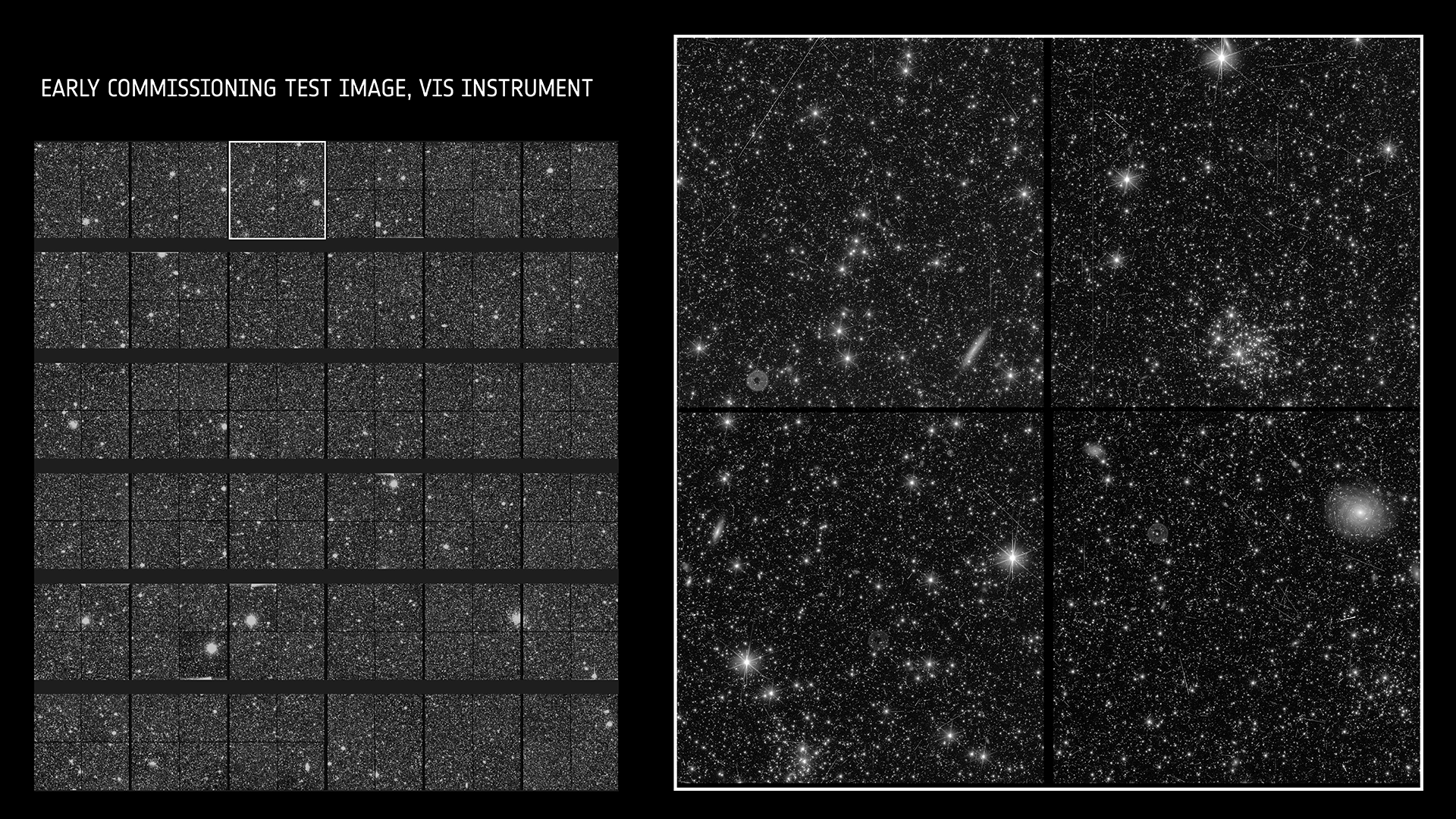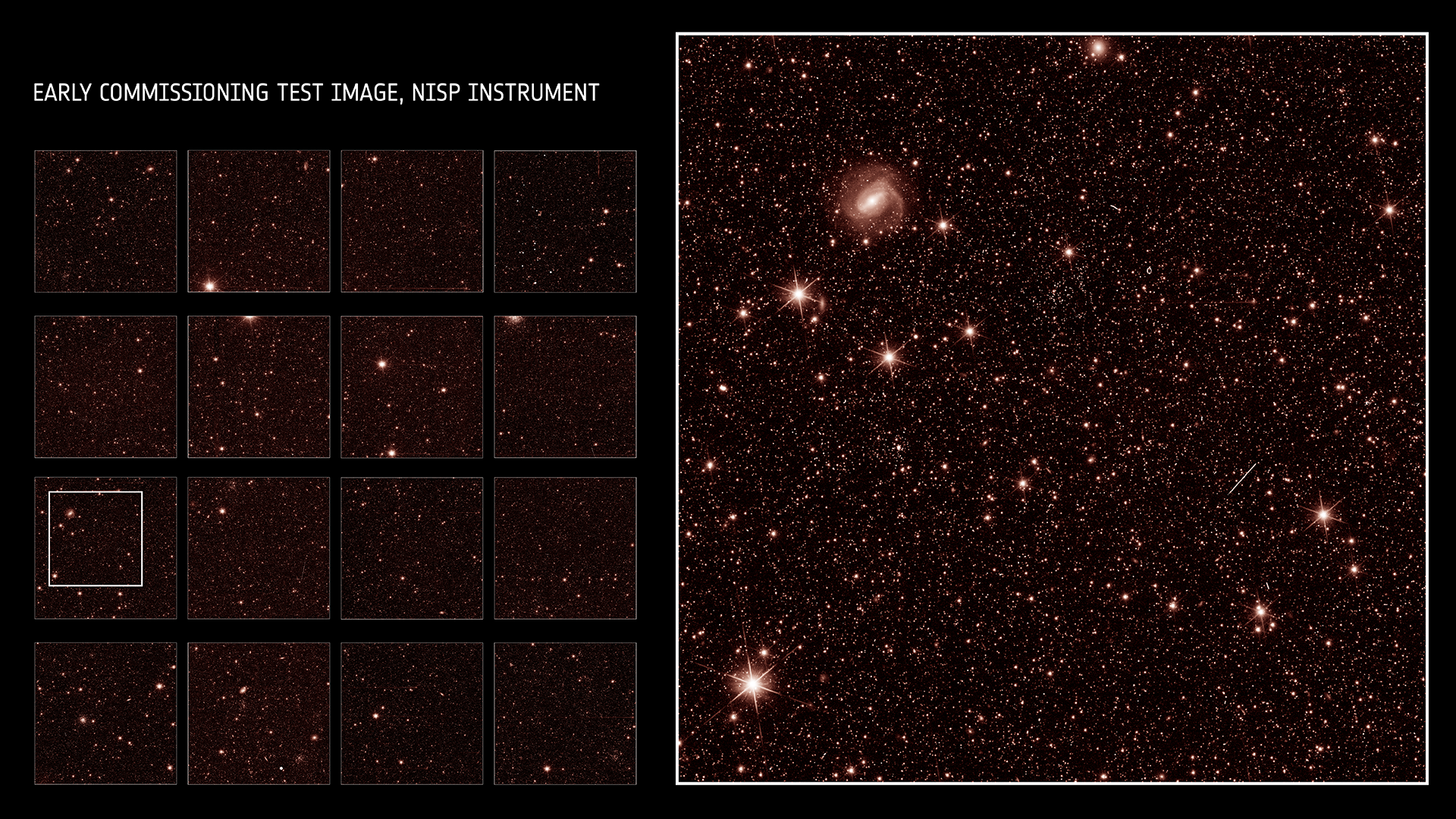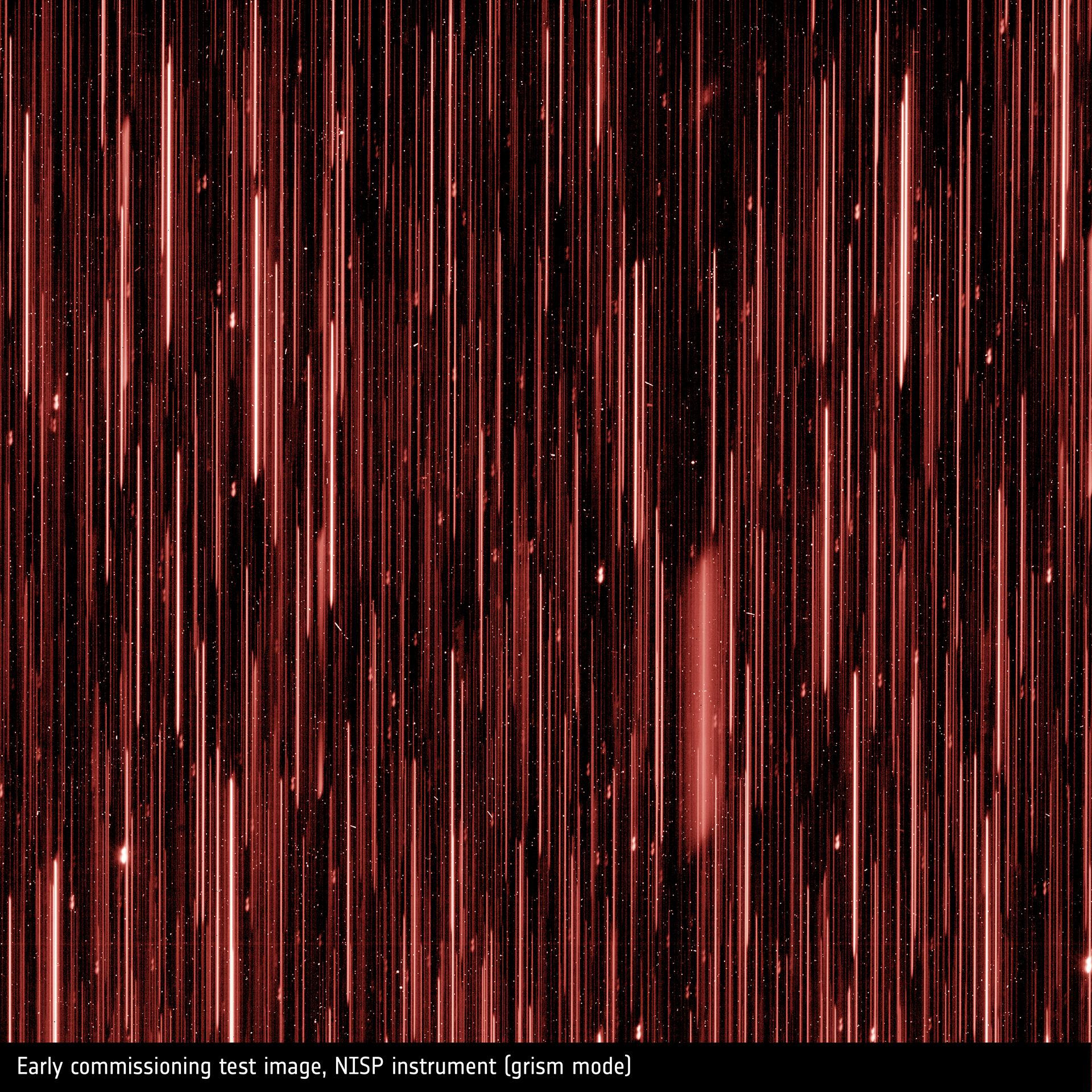Euclid’s success so far is really exciting because, to put it simply, this machine’s purpose is to map out the dark side of our universe by analyzing billions of galaxies that reside up to about 10 billion light-years away. Better yet, the agency also says this ambitious map will be in “3D,” because it’ll include the element of time to show how those realms evolved in tandem with a maturing cosmos.
“The outstanding first images obtained using Euclid’s visible and near-infrared instruments open a new era to observational cosmology and statistical astronomy,” Yannick Mellier, astronomer at the Institut d’Astrophysique de Paris and Euclid Consortium lead, said in a statement. “They mark the beginning of the quest for the very nature of dark energy.”
Euclid launched on July 1 from Cape Canaveral in Florida. Now floating about a million miles (1.6 million km) from Earth, it joined the James Webb Space Telescope on July 28 at what’s known as the second Lagrange point. Over the next few months, scientists will continue testing the machine until it starts officially developing its epic cosmic survey.
We’ll get more into what a dark-universe-hunting machine means in a bit, but first, let’s discuss Euclid’s stunning, star-filled images.

The images you see above were taken with an instrument on Euclid called VIS, which stands for “Visible Instrument.” As its name suggests, VIS captures the universe through the part of the electromagnetic spectrum that’s visible to human eyes, wavelengths between 550 and 900 nanometers.
On the left, you can see VIS’ full field of view — and on the right, a zoomed-in version. ESA likens the range of the close-up to about one quarter the width and height of the full moon as seen from Earth.
Some highlights of VIS’ portraits include cosmic rays shooting straight across the field, a wealth of unmissable glittering stars, and most importantly, a few fuzzy blobs. Those blobs, ESA explains, are galaxies Euclid will investigate further while developing a highly detailed map of our universe, dark energy and all.
“Ground-based tests do not give you images of galaxies or stellar clusters, but here they all are in this one field,” Reiko Nakajima, VIS instrument scientist, said in the statement. “It is beautiful to look at, and a joy to do so with the people we’ve worked together with for so long.”
Next, we get to NISP, which stands for Euclid’s Near-Infrared Spectrometer and Photometer. As ESA puts it, NISP has two roles. First, it can image galaxies in infrared light, or light invisible to human eyes that falls between about 950 and 2020 nanometers on the electromagnetic spectrum. The James Webb Space Telescope also taps into such infrared wavelengths, which is why scientists often say it’s unveiling an invisible universe. It quite literally is.
Second, NISP can measure precisely how much light each galaxy emits — this latter bit can tell us how far away those galaxies are.

The NISP images you see above are pretty similar to the VIS set in that the left side includes NISP’s full field while the right shows a zoomed-in section.
But before reaching the NISP detector, deep space light captured by Euclid also passes through some cool filters. And that offers some pretty awesome results. These filters can do things like measure brightness at a specific infrared wavelength, which helps with NISP’s galactic distance measurements.
“Although these first test images are not yet usable for scientific purposes, I am pleased that the telescope and the two instruments are now working superbly in space,” Knud Jahnke, from the Max Planck Institute for Astronomy (MPIA) in Heidelberg who works on Euclid’s NISP instrument, said in a statement.
And in fact, one of these filters is why NISP offered us a third test image.

Besides looking like an early 2000’s computer screensaver, this image is important because each streak represents an individual light spectrum of a galaxy or star. Euclid has a device known as a “grism” that can basically split cosmic light into a full spectrum of wavelengths before sending the data to NISP.
With this process, scientists can determine how far away a certain galaxy is, for instance, as well as what the galaxy is chemically made of.
“We’ve seen simulated images, we’ve seen laboratory test images,” William Gillard, NISP instrument scientist, said in the statement. “It’s still hard for me to grasp these images are now the real universe. So detailed, just amazing.”
Now, if you’ve still been stuck on the fact Euclid can help us understand the dark universe, here’s what that means.
What’s next for Euclid?
Dark energy and its partner-in-crime, dark matter, constitute some of the biggest and most fascinating questions to exist in astronomy today. Neither phenomena can be seen by human eyes, yet still appear to be holding our universe together.
For starters, space is constantly expanding outward in every direction like an unpoppable balloon. But the weird thing is, this ballooning seems to be happening at speeds scientists can’t quite account for with all the visible stuff in our universe. Thus, something else must be acting to accelerate the cosmic expansion. Scientists call that “something” dark energy.
Meanwhile, within the expanding universe, there seems to be some sort of glue making sure galaxies are held in place and dictating the way they’re arranged. For example, scientists calculate that intergalactic gas and stars often move around as though there’s extra gravity pulling on them. Presumably, this is because some sort of invisible material surrounds the galaxies these objects live in (perhaps like a halo) and therefore exerts gravitational forces on them. That unseeable “glue” is known as dark matter.
Dark matter and dark energy aren’t necessarily made up of one, or even two, things. They could be made up of a bunch of different components. Scientists just use these as bulk terms to describe gaps in our understanding.
All we know for sure, right now, is that the dark universe exists.
But if Euclid’s mission of exquisitely mapping the universe over the next six years or so pans out, perhaps scientists will gain some clues as to what the dark universe truly is.
This is because, as dark matter and energy interact with things in space, laying out the distribution and evolution of those things can tell us where the dark universe fits into the story.
“I have full confidence that the team behind the mission will succeed in using Euclid to reveal so much about the 95% of the universe that we currently know so little about,” ESA Director General, Josef Aschbacher, said in the statement.
“After more than 11 years of designing and developing Euclid, it’s exhilarating and enormously emotional to see these first images,” Euclid project manager, Giuseppe Racca, said in the statement. “It’s even more incredible when we think that we see just a few galaxies here, produced with minimum system tuning. The fully calibrated Euclid will ultimately observe billions of galaxies to create the biggest-ever 3D map of the sky.”
Copyright 2023 Space.com, a Future company. All rights reserved. This material may not be published, broadcast, rewritten or redistributed.
ABOUT THE AUTHOR(S)
Monisha Ravisetti is Space.com‘s Astronomy Editor. She covers black holes, star explosions, gravitational waves, exoplanet discoveries and other enigmas hidden across the fabric of space and time.

